November 15, 1998-Nightmare Off New Zealand
 Woody Goose
Woody GooseNew Zealand bound cruising boats, including our WINGS,were hit hard in November as a series of low pressure systems interacted with reinforced trade winds to kick up strong easterly winds and big seas. In the tough conditions which resulted at least five boats were lost and there were four tragic deaths, some of whom were friends we’d cruised with across much of the Pacific.
A fleet of about 30 yachts left Fiji, Tonga and New Caledonia ports in early November with forecasts of excellent weather. The first warning was on November 11 when a Met-Service weather fax from Wellington showed a sharp dip in the isobars to the north. The real problem was the combination of this new low and the nearly stationary high to the southeast. People started to get concerned. Most of fleet from Tonga decided to hang out at Minerva Reef until the system blew over, but those of us coming from Fiji and New Cal were committed. By noon Friday we had over 30 knots of SE wind and the seas were getting bigger. The HF radio nets were full of conversations about the rough rides and about how difficult it was to make the needed easting. On WINGS, although we had made a good run in the last 24 hours, 160 miles close hauled on port tack, and we holding our line to the Bay of Islands, we were having rough going. Under a double reef main and number 4 jib we were making seven knots, right down the rumb line, but we were taking a pounding, the waves were constantly coming over the top of the boat, and the windvane was working real hard to keep us on course. We had to slow down. Eventually we wound up motorsailing under a third reef as the wind peaked at 45 between gusts which we didn’t even measure and the waves turned into small mountains.

After a rough eight day passage we arrived at 3:30 AM on November 16, in Opua New Zealand. Cold, tired, but safe, along with five or six other yachts. By the next day we started hearing about the problems the rest of the fleet was experiencing.

Woody Goose, a beautiful wooden 53ft Ketch from Britain, with husband and wife Roger and Anita aboard, was overdue. Without a HF radio, and because of several other problems they had been dealing with such as a repeatedly failing steering system and other damage suffered in a grounding in Fiji, they had been buddy boating with another yacht. During the early days of the storm the two boats lost touch with each other and Woody Goose did not come up on the VHF radio. Their friends went back for four hours looking but never again saw Woody Goose. On Tuesday Morning the word swept through the cruising fleet in Opua: Woody Goose had gone on the beach north of there and Anita was lost in the surf and drowned. Days later, during trips to the wreck site on the long sandy beach in New Zealand’s Great Exhibition Bay where the cruisers went to help salvage equipment from the broken boat, the story came out. Exhausted after days of hand steering, they had decided to anchor off the coast. Even knowing that the lee shore was dangerous, they desperately needed a rest. In the early morning hours the boat dragged, the engine wouldn’t start, and when they tried to sail off the steering failed. In the surf Anita was swept overboard, her harness was left hanging empty in the cockpit. Roger set off flares and tried to search for her, but to no avail. When help, in the form of the local constable arrived, he and Roger found Anita’s body on the beach a few hundred yards from Woody Goose’s battered hull. Even though nearly everything removable, including the engine and the masts were saved, the boat itself was a total loss, it’s ribs broken and it’s bottom ripped out.
At the same time two boats to the north west of New Zealand were also in trouble. Energetic II had been dismasted and was drifting west, away from New Zealand. Energetic II crew of three (plus one dog) were able to clean up their boat and start powering west towards Lord Howe Island. No way could they motor against the wind and seas to New Zealand. Then the news reports came in on Janamarie, another 50 plus foot New Zealand vessel on the way home with four persons aboard. They were rolled in huge seas and two persons were lost. The rig was down and the pilot house windows were all blown out. One crew member was on deck with the owner preparing to go below when the incident happened and he was washed over, never to be seen again. The owner was on deck with him but his harness held and he survived. His wife and the other crew were in the pilot house and, unbelievably, the second crew member was sucked out a broken window and also lost. The survivors were seriously injured with lacerations and broken bones, but they struggled in spite of their injuries to keep the boat afloat. Help arrived in response to their EPIRB and they were rescued. Their boat was left at sea. The rest of the fleet, including single handers Caledonia and Talisman, straggled in one by one to Opua New Zealand, all with stories to tell, but alive.
Meanwhile, well to the east, the storm had passed and the fleet at Minerva Reef headed out on their passage to New Zealand. At the start their conditions were mild and the lead boats made good time. Before any of them arrived in New Zealand however another low had formed and the coming weather was forecast to be even worse this time than the one which had hit Woody Goose, Energetic II and Janamarie. By November 27 many of the boats had made it in ahead of the storm but on that day an EBIRB signal was received from a vessel named FREYA, just east of Cape Brett off the Bay of Islands. They were dismasted, disabled, and sinking. New Zealand’s top notch air rescue services found the boat and lifted the three persons who had been on board to safety. FREYA was left at sea and not seen again. The same day a VHF distress call was received in the same vicinity from SALACIA, another boat coming from Tonga with two persons, Mike Fritz and Julie-Ann Black on board. They were also disabled and drifting towards shore, but without EPIRB to help rescuers to find them. All day and night Friday cruisers listened spellbound on VHF to the radio traffic of the searchers looking for SALACIA just west of the Bay of Islands. At the time we were all hunkered down in bays and coves with winds in the anchorages in the high 50’s and driving rain which made visibility nearly zero. The seas off the coast where SALACIA was reported to be were horrific. Early in the morning of November 28th a Kiwi Air Rescue aircraft reported that they had located SALACIA and they had vectored a merchant ship to the scene. At dawn, before a helicopter had arrived, the crew of the ship apparently attempted to rescue the two sailors from SALACIA. Later, on the ship’s VHF Mike reported that both persons were thrown life rings. He saw that Julie was in hers, (he said that she also was in a survival suit and life jacket) and then he went to the bow of SALACIA and pulled the second life ring over his own head. He was lifted aboard the ship but Julie was lost from her ring and not seen again. Mike said at first that he thought she had stayed on the boat and gone below, but no one actually saw this. When the ship returned for a second pass to get Julie, all they reported finding was wreckage from SALACIA. Even though the search was continued all day, no sign of her was found, nor was SALACIA seen afloat after that.
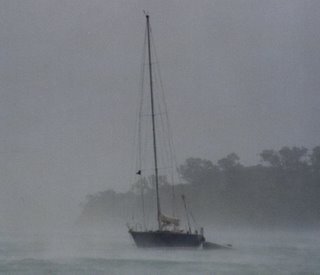 Wings, Anchored in New Zealand
Wings, Anchored in New ZealandClick here to see the log book pages of this passage.
Fred & Judy, S/V WINGS, Auckland, New Zealand
Labels: crew, New Zealand, sailing, storm

 Ovalau
Ovalau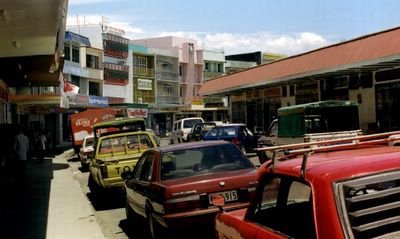 Ba
Ba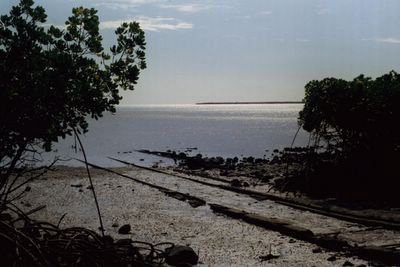
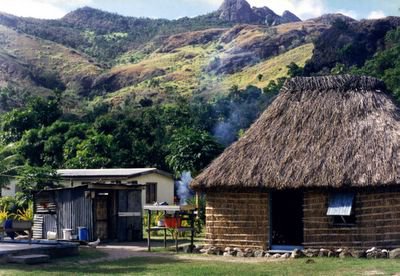 Waya Island
Waya Island Suva
Suva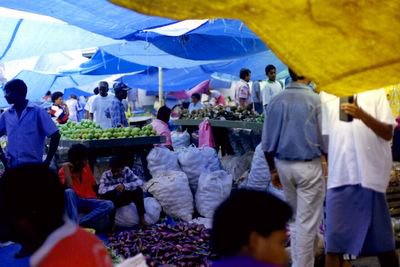 Suva Market
Suva Market.jpg)
